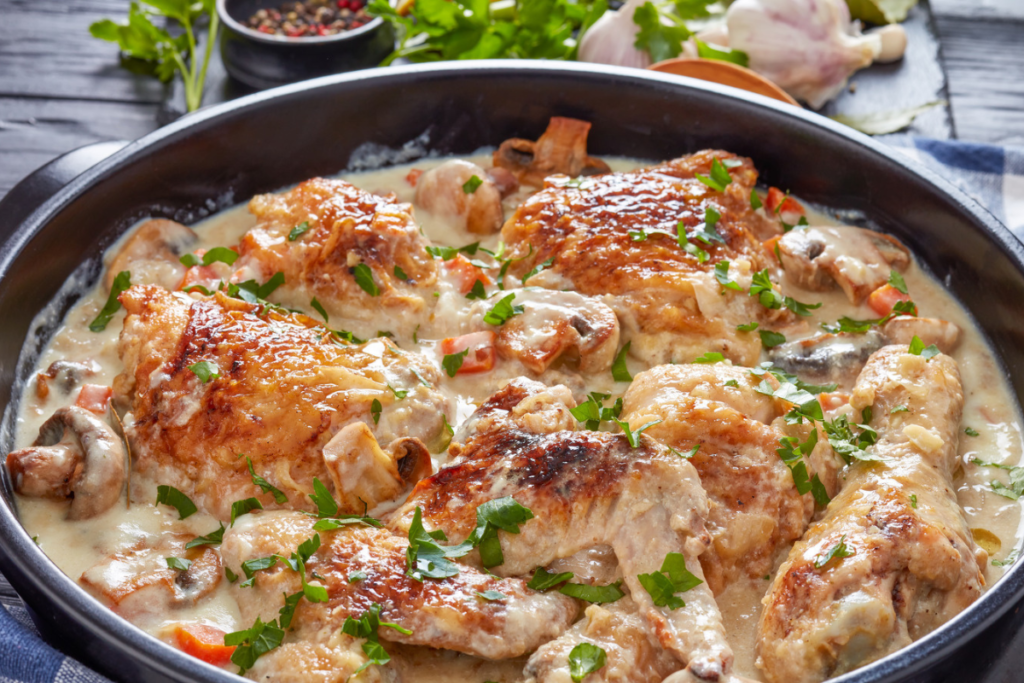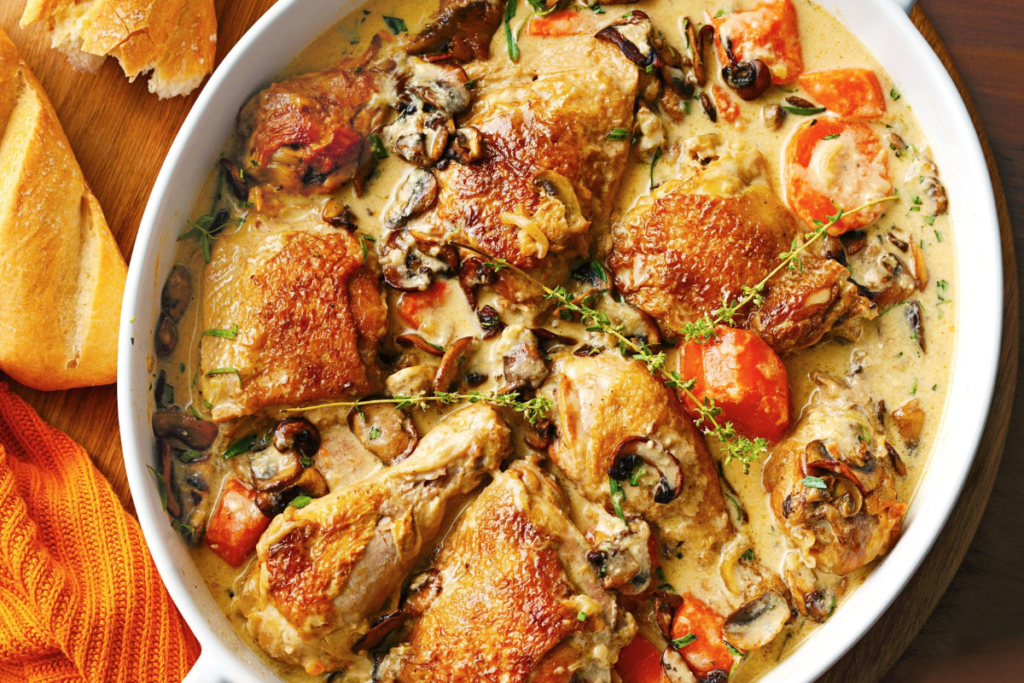Fricassee, a term that evokes the essence of culinary elegance, stands as a testament to the rich tapestry of cooking techniques. This method, deeply rooted in French cuisine, represents a harmonious blend of sautéing and stewing, a technique that transforms simple ingredients into a dish of sublime complexity.
- Originating from the French word ‘fricasser’, meaning to fry or break in pieces, fricassee is more than just a recipe; it’s a culinary tradition.
- Often featuring chicken, veal, or rabbit, the dish is renowned for its creamy, velvety sauce, a hallmark of its luxurious character.
In the world of comfort food, fricassee holds a special place. As highlighted in Epicurious, this dish is a celebration of flavors, where meat is gently cooked to perfection, retaining its succulence. The process, as Serious Eats elucidates, involves cooking the meat without browning, a step that distinguishes fricassee from other stews. This technique ensures a delicate, nuanced flavor profile, making fricassee a dish that resonates with culinary aficionados across the globe.
Historical Background
The historical background of fricassee reveals a fascinating journey through time and culture. This dish, deeply entrenched in culinary history, has evolved significantly from its early beginnings to its current status in modern cuisine.
- The term fricassee first appeared in English in the mid-16th century. It originates from the French word ‘fricasser’.
- Historically, fricassee was not just a method but a reflection of the ingredients available to the cook.
In the medieval French cookbook Le Viandier, one can trace the roots of fricassee to as far back as circa 1300. This illustrates the dish’s enduring appeal and adaptability. By the 18th century, fricassee had become a staple in both English and American cuisines, with variations in the thickening agents used, ranging from egg yolks to flour. This adaptability showcases the dish’s ability to evolve while maintaining its core identity.
- Fricassee’s versatility is evident in its use across various cultures, adapting to local tastes and ingredients.
- The dish has been a canvas for culinary creativity, evolving with time while retaining its fundamental cooking technique.
This rich history not only highlights fricassee’s culinary importance but also its role in the tapestry of global cuisine, making it a timeless classic.
Key Ingredients and Variations
The essence of fricassee lies in its key ingredients and the myriad of variations it offers. This dish, celebrated for its versatility, allows for a wide range of ingredients, each bringing its unique flavor and texture.
- Central to fricassee is the meat, typically chicken, veal, or rabbit. These proteins form the dish’s foundation.
- The meat is gently cooked in a blend of butter or oil, ensuring it remains tender and juicy.
A hallmark of fricassee is the sauce, a creamy concoction that is both rich and delicate. This sauce typically involves a base of the meat’s cooking stock, enriched with ingredients like cream, egg yolks, or flour for thickening. The choice of thickening agent can vary, reflecting regional preferences and dietary needs.
- Vegetables like onions, carrots, and celery often accompany the meat, adding depth and complexity to the dish.
- Herbs and spices, such as parsley, thyme, and bay leaves, infuse the fricassee with aromatic flavors.
In terms of variations, fricassee is a canvas for culinary experimentation. Regional adaptations have led to diverse versions of the dish:
- In Cajun cuisine, a tomato-based sauce with red wine is a popular twist.
- Jewish fricassee often includes offal and chicken scraps, cooked in schmaltz or olive oil.
These variations not only demonstrate fricassee’s adaptability but also its ability to resonate with different cultural palates. Whether it’s a classic French recipe or a regional adaptation, fricassee remains a beloved dish in kitchens worldwide. For those interested in exploring different salad recipes that complement fricassee, check out this easy chicken salad recipe.
Essential Cooking Techniques for Fricassee
The art of making a perfect fricassee lies in mastering its unique cooking techniques. These methods distinguish fricassee from other stews and braises, emphasizing gentle cooking to preserve the delicate flavors and textures of the ingredients.
Initial Preparation
- The process begins with selecting the right cut of meat, typically chicken, veal, or rabbit.
- Meat is cut into uniform pieces to ensure even cooking.
Sautéing Without Browning
- In traditional fricassee, the meat is sautéed but crucially, not browned. This step is pivotal in maintaining the dish’s characteristic light color.
- As explained by Epicurious, the meat is cooked in butter or oil over low heat, just enough to start the cooking process without altering its color.
Creating the Sauce
- The next step involves creating the sauce, a cornerstone of fricassee. This usually starts with a roux made from flour and fat, providing a base for the sauce.
- Stock, typically made from the same meat, is then added, along with herbs and spices, to infuse the sauce with flavor.
- For a deeper insight into sauce preparation, Serious Eats offers detailed guidance on achieving the perfect consistency and flavor.
Simmering to Perfection
- Once the sauce is prepared, the meat is returned to the pot and simmered gently. This slow cooking process allows the flavors to meld together harmoniously.
- The dish is cooked until the meat is tender and the sauce has thickened to the desired consistency.
Final Touches
- Before serving, final adjustments are made to the seasoning, ensuring a balanced flavor profile.
- The dish is often garnished with fresh herbs, adding a burst of color and freshness.
By adhering to these techniques, one can create a fricassee that is not only a delight to the palate but also a tribute to the culinary tradition it represents. For more insights into cooking techniques, especially for comforting one-pot meals like fricassee, take a look at this guide on hearty cowboy soup.


